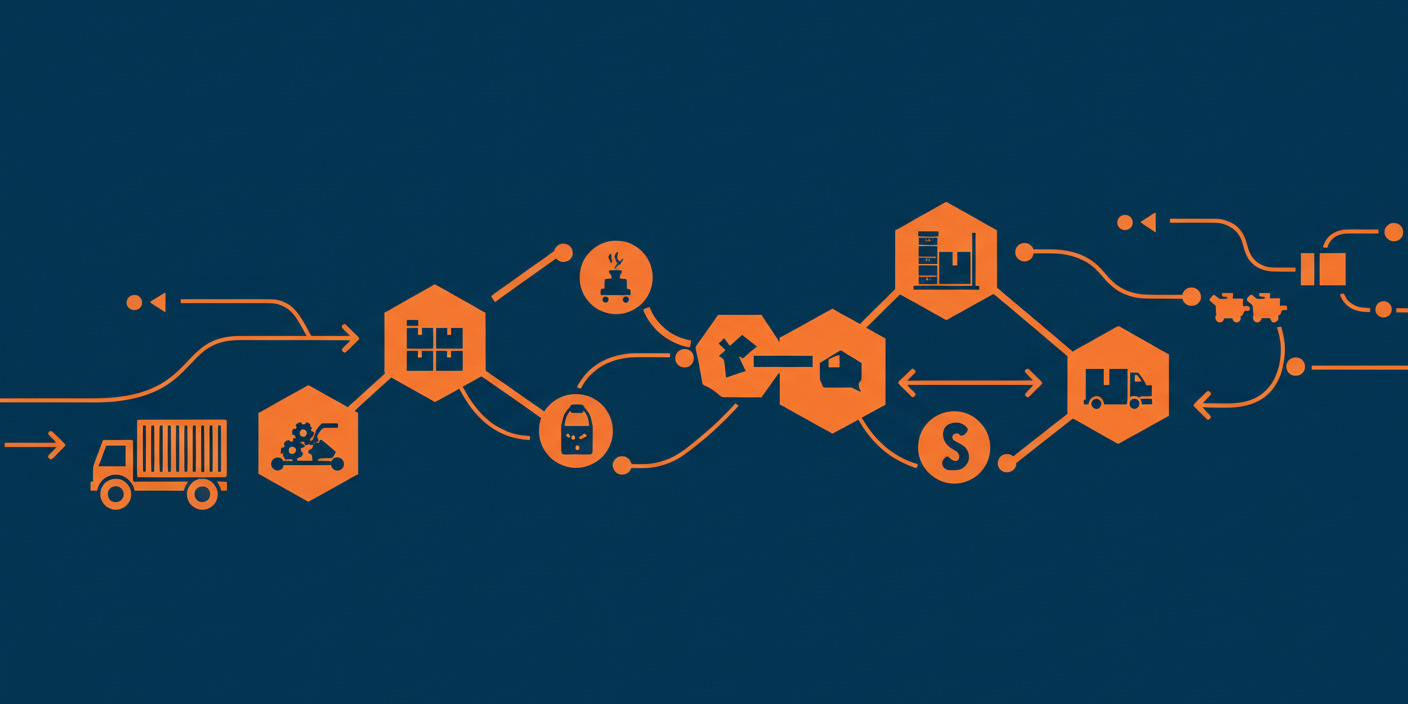
When people talk about AI in supply chains, the conversation usually centers around Amazon, Walmart, or some multinational with a logistics budget the size of a small country’s GDP. It’s easy to assume AI is out of reach for small and medium-sized enterprises (SMEs), a luxury only global giants can afford. But that assumption is outdated — and frankly, wrong.
AI is becoming more accessible, more modular, and more tailored. And SMEs that learn to integrate it into their supply chains, even in small ways, can compete in ways they couldn’t five years ago. It’s not about mimicking Amazon. It’s about using the tools that fit your size and speed.
So how exactly can AI help SMEs stay competitive? And is it really worth the investment?
Let’s break it down.
AI for SMEs: Not as Complicated (or Expensive) as You Think
The myth that AI requires a full-blown data science team and millions in infrastructure is finally starting to fade. Thanks to off-the-shelf platforms, no-code tools, and cloud-based APIs, small businesses can dip into AI-powered solutions without rebuilding their entire tech stack.
Take inventory management — an age-old headache. Predicting how much stock to hold, when to reorder, and where to place it across multiple locations is hard enough even with experience. AI-powered tools use demand forecasting algorithms that pull from historical sales, seasonality, and market trends. These systems don’t just automate reordering — they optimize it.
A UK-based SME, Aston Microphones, saw a 30% reduction in excess stock after using predictive analytics to streamline supply chain planning (EazyStock case study). That’s a big win for a company with limited warehousing and working capital.
Where AI Can Make a Measurable Difference
Let’s go beyond forecasting. Here are a few key areas where SMEs can use AI in supply chains and actually see ROI without taking a huge risk:
1. Smarter Supplier Management
Vendor relationships can make or break a small business. AI tools can analyze delivery patterns, quality issues, and even external risk signals (think political instability or economic indicators) to help SMEs make better sourcing decisions.
2. Route Optimization and Delivery Planning
Even small logistics operations can benefit from AI-based routing. Tools can help optimize delivery schedules in real time, factoring in traffic, weather, and load balancing. This isn’t just more efficient — it cuts fuel costs and improves on-time delivery.
3. Demand Sensing
AI can process signals like web traffic, social media mentions, or search trends to detect changes in demand before they hit your bottom line. For instance, a specialty coffee roaster might see a sudden uptick in online buzz about a new origin and prepare inventory ahead of time.
It’s Not All Plug-and-Play: Real Challenges to Consider
AI can do a lot — but it’s not a magic box you install and forget. SMEs need to approach implementation with eyes wide open.
1. Data Quality Still Matters
AI is only as smart as the data you feed it. Many SMEs don’t have clean, structured historical data, which can make onboarding rocky. You might need to invest time upfront in cleaning spreadsheets, integrating systems, or changing data entry habits.
2. Change Management Isn’t Optional
AI can cause friction if teams feel like it’s replacing their expertise. Employees who’ve managed inventory for years might resist trusting a predictive algorithm. SMEs need to frame AI as an assistant, not a replacement.
3. Ethical and Transparency Questions
Let’s not gloss over this: algorithmic decision-making can introduce bias, especially in supplier selection or workforce management. It’s crucial to vet vendors, ask how models are trained, and ensure decisions can be explained and audited.
So, Is It Worth the Investment for SMEs?
Here’s the honest answer: yes — but only if you’re strategic about it.
Don’t chase the biggest, flashiest tool. Start small. Identify a clear operational pain point — maybe you’re always overstocked on some SKUs and understocked on others. Try one AI-based forecasting solution. See if it saves time or reduces waste.
SMEs that approach AI like a toolkit — not a transformation mandate — tend to get the best results.
And as AI tools continue to become more user-friendly, even a small investment can compound over time. Efficiency becomes cost savings. Faster decision-making frees up bandwidth. Better forecasting means fewer customer complaints and less cash tied up in dead stock.
Final Thoughts: Smart, Scalable, and Yours to Use
Competing in the supply chain doesn’t mean outspending or out-hiring the big guys. It means being smart with the resources you do have.
AI isn’t just for tech giants anymore. It’s for the local manufacturer trying to manage a more agile warehouse. It’s for the growing e‑commerce shop that wants to get ahead of seasonal demand. It’s for any SME that’s tired of running supply chain operations on guesswork and spreadsheets.
Yes, there’s a learning curve. But the tools are here. The case studies are real. And the sooner you start exploring how AI fits your supply chain, the sooner you stop playing catch-up — and start pulling ahead.